Common names: fly agaric, fly amanita
Scientific name: Amanita muscaria
Family: Amanitaceae
Fruiting season: late summer to early winter
Habitat: woodland and heathland with host trees
Famous, enchanting and highly toxic. Fly agaric is the home of fairies and magical creatures and a lover of birch woodland, where it helps trees by transferring nutrients into their roots, but if eaten can cause hallucinations and psychotic reactions.
Common names: fly agaric, fly amanita
Scientific name: Amanita muscaria
Family: Amanitaceae
Fruiting season: late summer to early winter
Habitat: woodland and heathland with host trees
Fly agaric has a bright red cap with white spots and white gills. It can grow to 20cm across and 30cm tall and has a savoury smell.
Cap: scarlet or orange colour, sometimes with white wart-like spots.
Gills: white to cream located under the cap. Closely packed and not joined to the stem.
Stipe (stalk): white with a brittle texture. The base has a bulbous volva (cup-like base from which the stem emerges) with shaggy rings of scales around it and a large skirt.
Spores: white and oval.
Not to be confused with: the blusher (Amanita rubescens), which is of similar shape, with a pale, reddish-brown cap and cream spots.
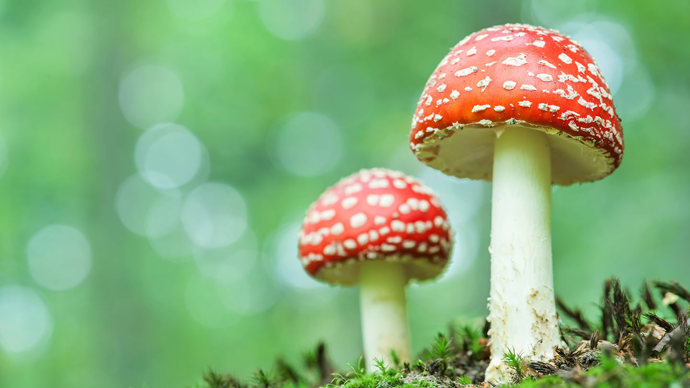
Credit: Ivan Kmit / Alamy Stock Photo
Fly agaric is native to the UK. It grows in woodland and heathland on light soils among birch, pine or spruce. It is a fungus that often forms mycorrhizal associations with birch, but also other trees.
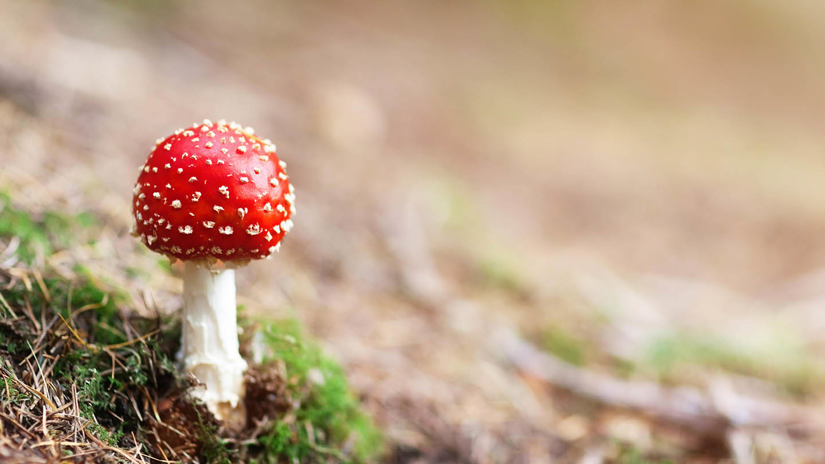
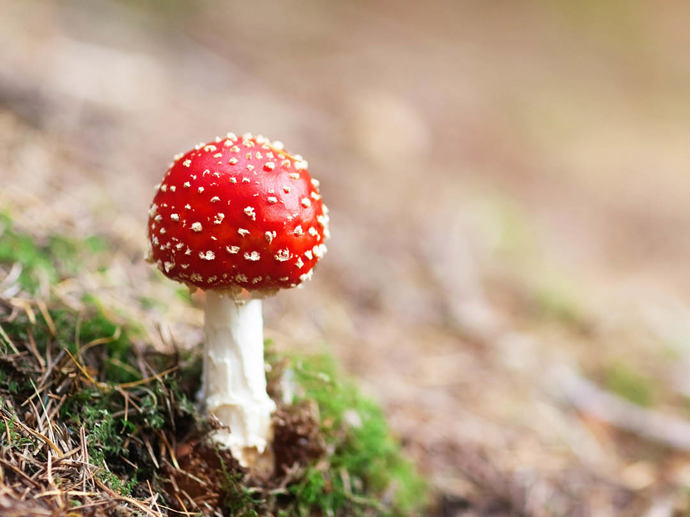
External link
This distinctive toadstool is a sure sign autumn is on the way. Find out how your sighting could help scientists track the effects of climate change on wildlife.
The 'spots' are remnants of the white veil of tissue that at first enclosed the young mushroom, and are sometimes washed off by the rain.
Fly agaric has a long history of use in religious ceremonies, particularly in Asia. For over 4,000 years it was the ingredient in a sacred and hallucinogenic ritual drink called 'soma' in India and Iran; while the Siberian shamans would give it out as a gift in late December.
This toadstool has turned up in many fairy tale stories and features in the story of Alice in Wonderland when she is given some fly agaric to eat.
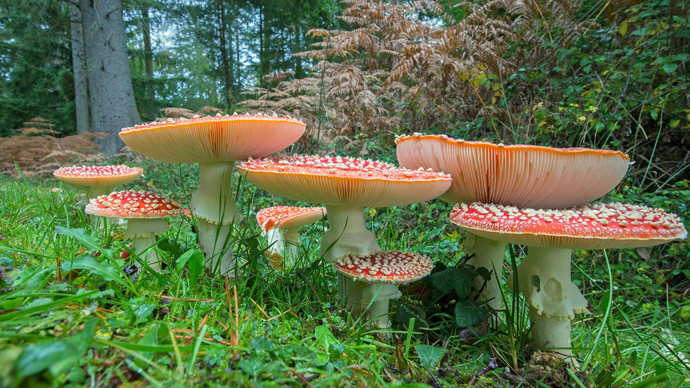
Credit: David Kjaer / naturepl.com
Fly agaric is poisonous and infamous for its psychoactive and hallucinogenic properties. But, reports of human deaths are extremely rare. It was traditionally used as an insecticide. The cap was broken up and sprinkled into saucers of milk. It's known to contain ibotenic acid, which both attracts and kills flies – which gave it its name.
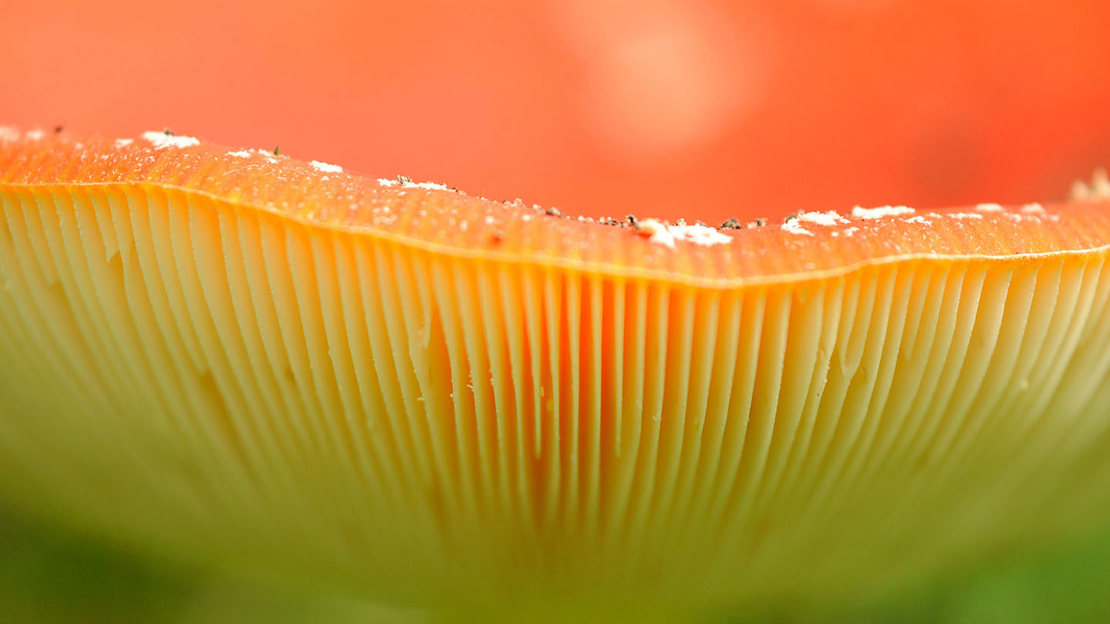
It was common on Christmas cards in Victorian and Edwardian times as a symbol of good luck and its colours are thought to have been the inspiration for Santa Claus's red and white suit.
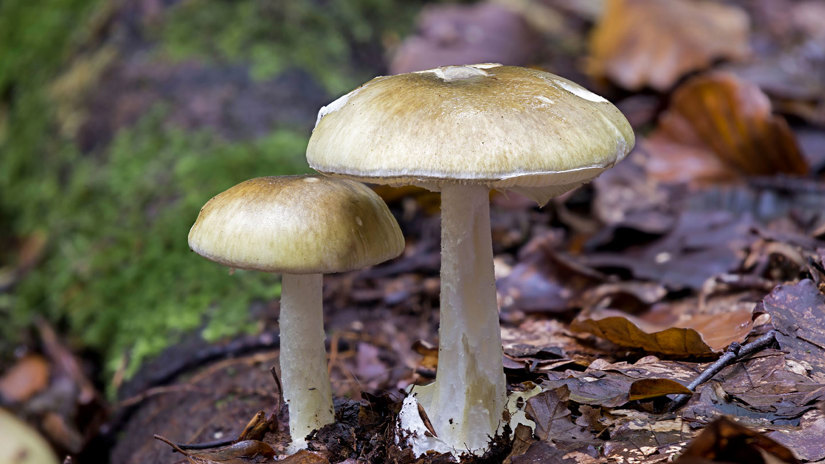
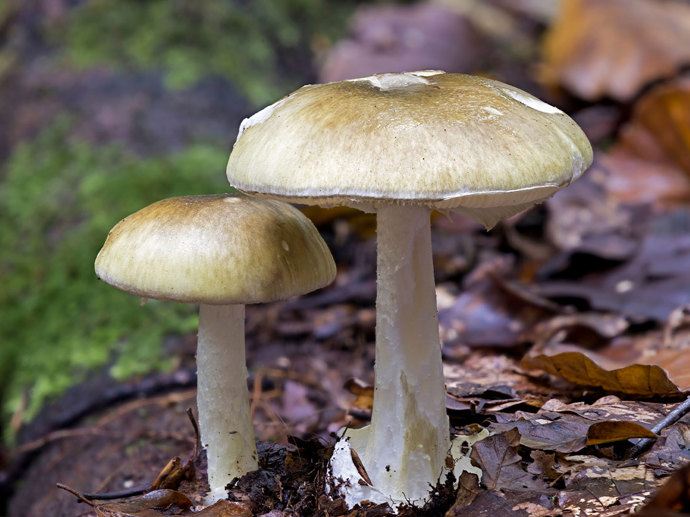
Hanako Shimada • 19 Feb 2025
Your guide to 8 of the most poisonous mushrooms in the UK, including the terrifyingly named deathcap, destroying angel and funeral bell. Find out where they grow, how to identify them and why you should steer clear!